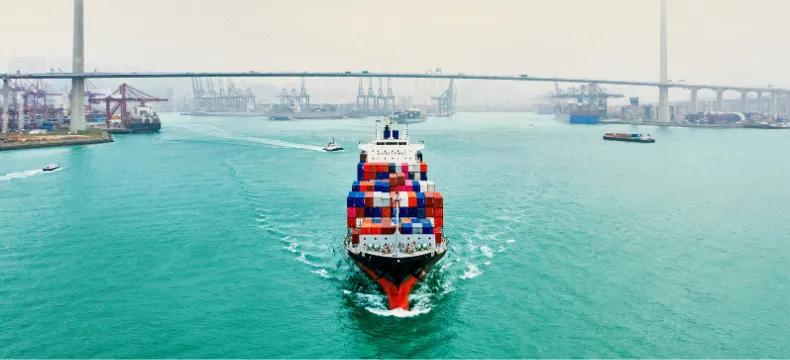
Rethinking Treasury in a Volatile Trade Environment
26 August 2025
Reading time: 4 min
How finance leaders are future-proofing supply chains and working capital strategies amid uncertainty
From tariffs and FX swings to evolving industrial policies and supply chain shocks, today’s global trade volatility is testing the limits of corporate treasury functions. What was once a back-office role is now central to navigating risk, managing liquidity, and enabling strategic decisions across global businesses. In two recent ING webinars—one with clients in Asia Pacific, the other with clients in the Americas and EMEA —a common theme emerged: in an increasingly fragmented and uncertain trade environment, treasury must evolve to become more agile, data-driven, and deeply embedded in strategic planning.
The New Role of Treasury: From Gatekeeper to Enabler
Global corporates are no longer treating treasury as purely operational. As trade routes shift, financing costs rise, and geopolitical risks mount, the treasury function is being called on to act as a strategic hub. Its new role includes enabling cross-border flows, securing supply chains, and mitigating risks proactively.
Key themes emerging across industries and regions include:
Proactive working capital management
Multi-hub treasury models
FX and tariff risk mitigation
More collaborative, tech-enabled finance functions
The volatility is real—but so is the opportunity to unlock efficiencies, protect margins, and build resilience through smarter treasury practices.
Liquidity: Diversification Is Now Essential
Historically, many US-based corporates maintained the bulk of their liquidity in US dollars. But with recent Opens in a new tabswings in FX markets and a credit rating downgrade for US sovereign debt, treasury teams are increasingly diversifying both the currencies and the jurisdictions in which they hold reserves.
This shift reflects a broader trend: treasury teams are moving from centralised liquidity pools to hybrid models that combine global oversight with regional agility. Local liquidity hubs allow corporates to access funding faster, manage currency exposures more flexibly, and remain closer to operational realities on the ground.
Hedging: Moving Beyond Short-Term Covers
Dramatic currency moves—like the euro-dollar pair rising in the span of months—have forced companies to reassess the scope and duration of their FX hedging programs.
Short-term hedging is no longer sufficient. Many corporates are now applying portfolio-based approaches, supported by quantitative modelling and scenario analysis, to identify natural hedges and optimise cost-to-risk trade-offs. Hedging strategies are being aligned more closely with real economic exposures, especially around long-term contracts and supplier commitments.
This more disciplined and data-informed approach reflects a treasury mindset that’s shifting from reactive protection to long-term value optimisation.
Tariffs: Planning for the Unplannable
Few topics have dominated client discussions recently as much as tariffs have. The phased implementation of new Opens in a new tabUS tariffs on Chinese goods has injected fresh uncertainty into global trade planning.
Some corporates responded tactically—front-loading shipments or accelerating orders before tariff deadlines. Others took a more structural approach, shifting production from China to Southeast Asia or renegotiating terms with key suppliers.
What’s clear is that treasury must be prepared to respond quickly to shifting trade costs. That means ensuring flexible access to working capital, especially when inventory builds or production shifts are required at short notice. It also requires close coordination across finance, procurement, and business units to align liquidity needs with supply chain realities.
Trade Finance: Strengthening the Full Value Chain
Trade finance tools are playing a larger role in supporting both upstream and downstream partners. In Asia, receivables purchase programs have become a critical solution for suppliers expanding into new, less familiar markets—helping manage both working capital needs and credit risk.
On the other side, US-based buyers with exposure to Asia are increasingly using supply chain finance (SCF) to support their vendors. This ensures reliable production, stabilises procurement costs, and preserves margins even amid tariff or supply chain stress.
SCF and receivables financing are no longer just cost-saving tools—they’re strategic levers to keep supply chains flowing and unlock trapped capital.
Treasury Transformation: Beyond Systems to Strategy
Technology continues to play a central role in treasury transformation. From automated treasury management systems that offer real-time cash visibility, to the growing use of AI for exposure modelling and forecasting, corporates are investing in tools that enable faster, smarter decisions.
But the shift goes beyond automation. Many companies are rethinking the structure of treasury itself—breaking down silos between treasury, tax, financial planning & analysis, and IT to form unified, agile finance functions.
A more integrated finance model allows for faster decision-making, stronger controls, and a broader strategic view—critical in a world where economic disruptions can emerge overnight.
Future-Focused Priorities for Treasury Teams
Looking ahead, ING sees three priorities for corporate treasury leaders seeking to future-proof their operations:
1. Maximise Optionality
Design flexible treasury structures that allow for quick adaptation—whether that’s relocating production, adjusting payment terms, or tapping local liquidity in multiple jurisdictions.
2. Make Working Capital Everyone’s Business
Working capital can’t just sit with Treasury – it needs to be a shared priority. By making metrics like Days Sales Outstanding (DSO), Days Payable Outstanding (DPO), and inventory turnover visible across functions, companies ensure every team plays a role in unlocking cash.
3. Use Scenario Planning to Drive Strategy
Treasurers should not just model what’s probable—but what’s possible. Stress-testing supply chains, financing structures, and margin exposures under different trade or rate scenarios is becoming a standard expectation.
From Reaction to Resilience
Today’s treasury teams face no shortage of challenges—tariffs, FX volatility, shifting trade rules, and macroeconomic uncertainty. But the strongest teams are not just reacting. They’re building strategic resilience into the fabric of their organisations—one financing structure, policy, and data model at a time.
By diversifying risk, enabling flexibility, and embedding smarter planning, treasury leaders are becoming critical enablers of stability, adaptability, and long-term value across the enterprise.
Want to dive deeper into treasury transformation? Watch the full webinar here
Americas & EMEA session
Opens in a new tabOr click here to watch APAC session
Shivkumar Seerapu
Head of Transaction Services APAC

Tibor Bartels
Head of Transaction Services Americas
